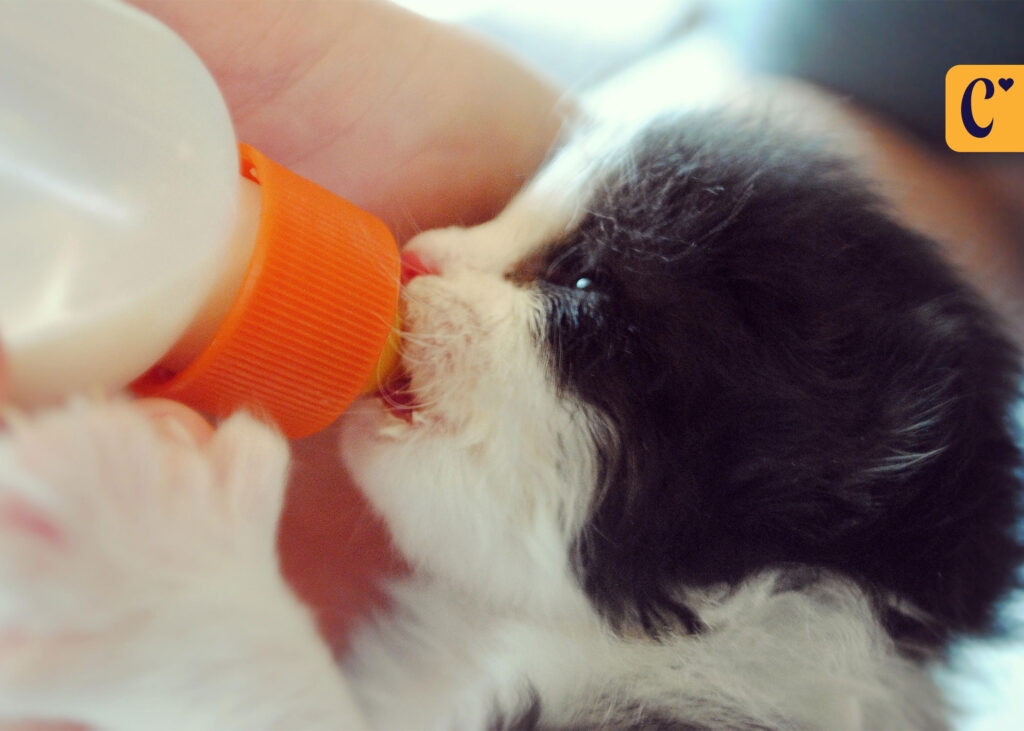Kittens have distinct nutritional requirements compared to adult cats, which underscore the importance of providing them with specially tailored food. In an ideal scenario, newborn kittens are nourished by their mother for the initial weeks, usually ranging from 4 to 6 weeks post-birth. During this crucial period, the mother’s milk offers a complete array of essential nutrients, effectively meeting the kitten’s nutritional needs and bolstering its developing immune system.
To ensure that kittens receive all the vital growth-promoting elements from their mother’s milk during these formative weeks, transitioning the mother cat to a fortified diet with high-quality cat food is advisable.
This dietary shift supports her ability to continue nursing and furnishes her with the essential nutrients needed to meet the growing demands of her kittens. This strategy allows the kittens to benefit from the rich mother’s milk while ensuring their mother’s overall health and nutritional well-being.

Nutritional Needs of Kittens
Kittens need a diet with a high protein content since protein is the building material of tissues and is a necessary component for the recovery of the damaged body in the early stages of development. Kittens need more calories to meet their energy needs, so adding fat to their diet is another factor to consider.
Calcium and phosphorus are vital elements for the development of strong bones and teeth, however, maintaining the correct balance in the intake of these elements is especially important to prevent bone problems. Adequate intake of vitamins and minerals, including vitamin D, taurine, and essential fatty acids, is important for healthy eyes, heart, and shiny coat.
Consultation with a veterinarian will help you choose the optimal diet for your kitten, which will meet all its nutritional needs, according to its age, weight, and physical activity.
How to Care for Orphaned Kittens
When a newborn kitten lacks a mother’s care, or if the mother is unable to provide milk for any reason, it becomes imperative to step in and provide the necessary care. In such situations, a milk replacer, rather than other types of milk like cow, human, or goat milk, should be utilized to mimic the mother’s milk and meet the kitten’s specific nutritional needs.
You can readily procure a suitable pacifier and milk replacer from your local pet store or pharmacy. It is crucial, however, to select an appropriately sized pacifier that aligns with the kitten’s size and age to ensure comfortable and effective feeding. This method is especially crucial for orphaned kittens, as it not only sustains their growth but also fosters a sense of security and warmth, akin to what they would experience with their mother. Thus, providing a nurturing environment with the right tools and nutrition is paramount for the well-being of motherless or inadequately nursed kittens.
Kitten Feeding Intensity: Portion Size & Frequency
If the newborn kitten does not have a mother and needs to be fed by hand, it is preferable to feed it with a pacifier at least every 2 hours until 2 weeks old. The kitten will stop eating by itself when it is put down. From 2 to 4 weeks, the intensity of feeding changes. Therefore, we recommend feeding the kitten every 3-4 hours during this period. From the 4th week, slowly introduce the kitten to dry food (kibbles). Dry kibbles for kittens can be mixed with breast milk or milk replacer, mixed well, and fed to the kitten with a dinner spoon.
At first, the kitten may take the news but do not give up easily and gradually repeat your attempts. Do not rush the process, give the kitten as much time as it needs to get used to the novelty. To enrich the body with all the necessary minerals, along with dry food, give the kitten milk replacer (every 7-8 hours) until 6 weeks old. In parallel with the proper management of the process, it is advisable to check the kitten’s weight daily and make sure that it is steadily gaining weight.
When the kitten reaches the 4th week of growth, it is important to provide clean water along with food. It is advisable to place the water bowl away from the kitten’s bed in an easily accessible place. Change the kitten’s water every day or several times a day, and try to keep its temperature slightly above room temperature each time. Cold water is not recommended for kittens.
At 6-8 weeks of age, the kitten is ready to switch to kitten food. During this period, the kitten should be offered both dry and wet food and he should be allowed to make his own choice. From the 8th week to the 6th month, we should feed the kitten 3-4 times a day with food specially designed for them. From 6 months to 1 year, we can reduce the number of servings to two a day. From 1 year, the kitten reaches the age of adulthood. Accordingly, both the food formula and the number of servings change from this stage of development. As for adult cats, they should usually eat 2-4 times a day a complete and balanced food specially designed for cats. However, food portion sizes should be determined on a case-by-case basis, based on age, size, and activity level, based on a veterinarian’s recommendation.
